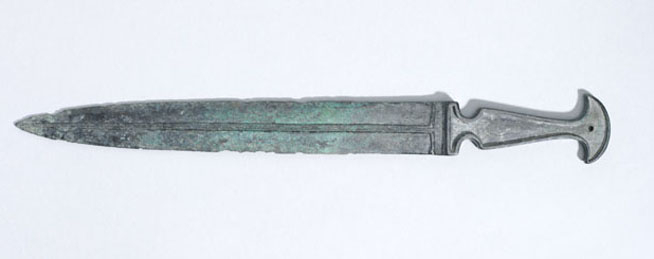Weapon Wednesday

Weapons are one of the most politically-incorrect subjects there are, associated with brutality and violence. But they are also important, and have often defined the cultures that made them (perhaps because warriors dominated most past societies). When we talk about the Bronze Age or the Iron Age of the past, we are primarily talking about the weapons that were made of those materials. When we think of the Ancient World, from the beginnings of writing to the fall of the Roman Empire we often think of ranks of heavily armed Assyrians, chariot-driving Egyptian Pharaohs, and
The warrior was a highly respected part of most societies, and was thought of as being the protector and defender of society. It was not only the knights of Europe who thought that to be a warrior also meant to have a code of conduct, and many societies felt that strength and weapons did not necessarily correlate with power and control, but rather called for duty and honour. Further, because of their importance in past societies, weapons were often technologically advanced, and were also artistically important, made of fine and rare materials.
To honour the warriors and the weapon-makers of the past, on Wednesdays, the ROM will be highlighting weapons, their beauty, technology, and social impact. Each week there will be something different brought to you via Twitter and occasionally also on the ROM blog. The ROM's collections cover the world, of all periods, so we have a lot to draw on! Look for us on Twitter at #WeaponWednesday
Ground-stone axe head, China, 3300-2500 BC (ROM Photography - ROM Images Link)




